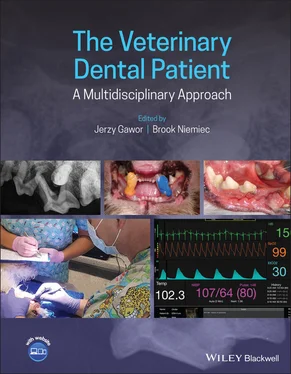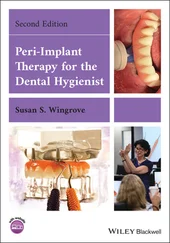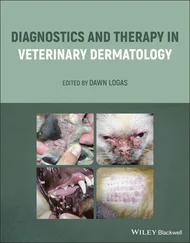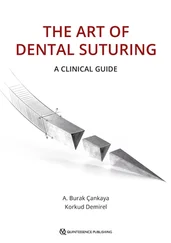5.3.4.2 Passive Home Care
Passive home care is a popular alternative means of decreasing periodontal disease. It consists of the use of specially formulated diets, chews, and treats, as well as water additives. There are numerous products available, but only a few have any scientific evidence that they produce a health benefit. Therefore, it is recommended that veterinary professionals review the literature to determine for themselves whether or not to recommend a particular product (Roudebush et al. 2005). It is always best to evaluate the research behind product claims, and not simply read the marketing hype.
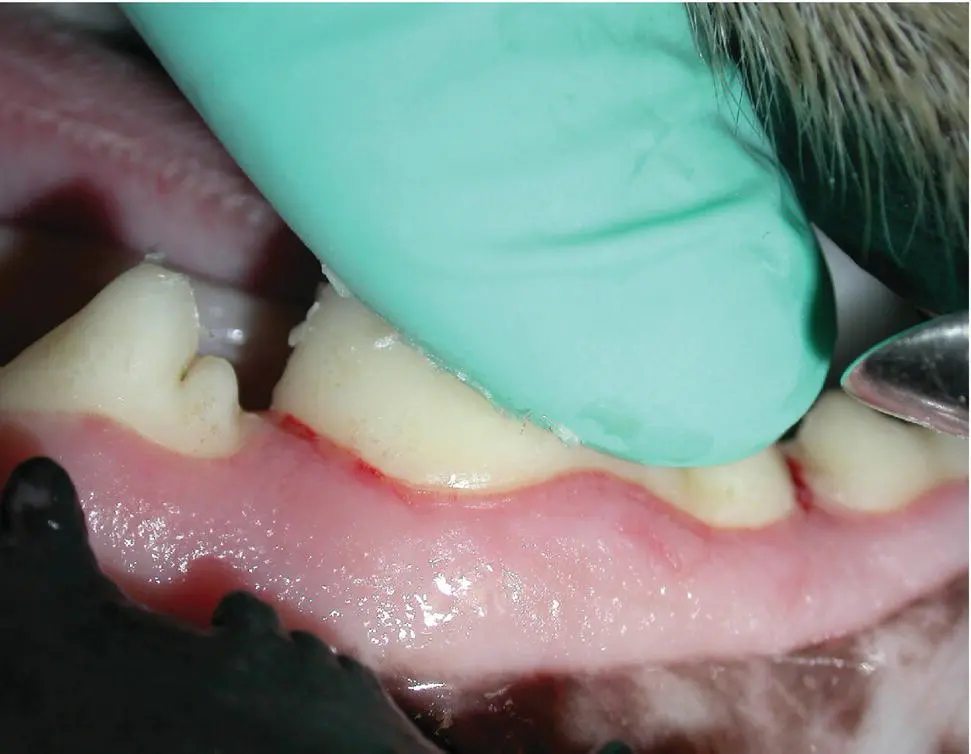
Figure 5.9 Application of the waxy barrier sealant.
An invaluable resource for the busy practitioner is the Veterinary Oral Health Council (VOHC), a group of veterinary dentists who evaluate product claims and give a seal of approval to worthy products. A list of such products can be found on the group's website: www.vohc.org.
However, most studies, along with the VOHC, only give an overall plaque and calculus reduction score and do not tell us where the plaque was reduced. Therefore, results may not correlate with decreased periodontal disease. Look for softer‐texture products that maintain contact with the tooth all the way to the gingival margin.
Since passive home care requires no real effort by the owner, compliance and regular application are far more likely than with active care. This is very important, as long‐term consistency is the key factor in effective home dental care (Ingham and Gorrel 2001). It has been shown that the compliance rate for tooth brushing among highly motivated pet owners is only around 50% after six months (Miller and Harvey 1994). In fact, one study showed that passive home care may therefore be superior to active home care, simply due to the fact that it is actually performed (Vrieling et al. 2005). This does not mean that it is more effective, just that the average client is not compliant with active care.
This section provides recommendations for several products based on a review of the current literature combined with the authors professional experience. This list is not comprehensive, and new information and new products are continually available. The particular position on the list of homecare means, have products branded by HealthyMouth LLC which are classified in several groups like: water additives, toothpastes, edible treats, sprays and gels.
5.3.4.2.1 Tartar‐Control Diets
It has long been believed that traditional dry dog food is good for oral health, and one study appeared to support this (Gawor et al. 2006). However, other studies show that dry food is not superior to moist foods in this regard (Harvey et al. 1996). There are several specially formulated diets available that have been shown to decrease plaque and tartar build‐up (Jensen et al. 1995). These products simply employ abrasives to scrape the teeth. The individual kibbles in these therapeutic diets tend to be larger than those in standard pet food (Vrieling et al. 2005; Hennet et al. 2007), which increases the amount of chewing performed and the efficacy of the abrasive aspects (Larsen 2010) ( Figure 5.10). Many products also contain a calcium chelator 16 to further reduce dental calculus (Lage et al. 1990; Liu 2002; White et al. 2002; Stookey and Warrick 2005; Hennet et al. 2007).
Numerous products in this segment have received the VOHC seal as effective in tartar (and in some cases, plaque) reduction. 17 , 18 , 19 , 20 , 21 However, even though these products may decrease plaque and calculus, many are only effective on the cusp tips, not at the gingival margin (Stookey and Warrick 2005). This is an important point as supragingival plaque and calculus are nonpathogenic, so minimal control of gingivitis may be obtained via this method of calculus control (Roudebush et al. 2005). Of the available diets, only one 22 has been scientifically proven to decrease gingivitis (Logan et al. 1999, 2002; Logan 2001). The main reason for this product's effectiveness is the fiber arrangement within the kibble, which requires the tooth to fully enter the kibble prior to its breaking apart, allowing the entire tooth (including the marginal area) to be cleaned ( Figure 5.11a,b).
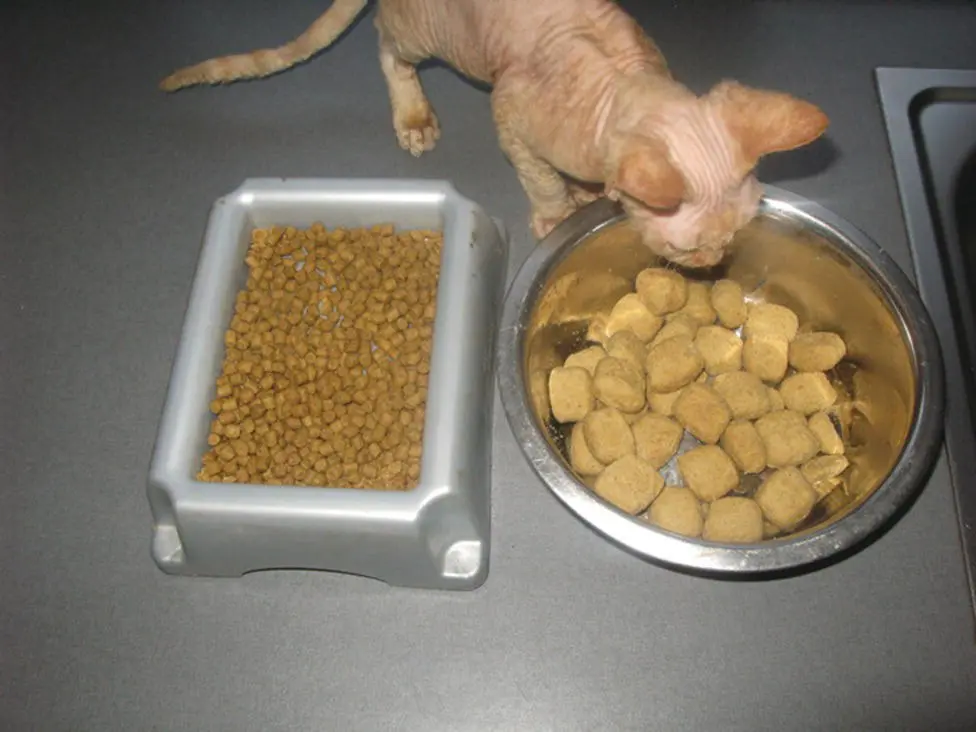
Figure 5.10 Kibbles intended for oral hygiene (right) are larger than normal pet food kibbles (left).
5.3.4.2.2 Dental Treats and Chews
There are numerous treats/chews available for passive home care. The original and most common are the biscuit‐style treats. Plain biscuits have not been shown to aid in the reduction of periodontal disease (Roudebush et al. 2005). A better choice appears to be biscuits coated with hexametphosphate (HMP), though there are studies that support as well as question their efficacy (Stookey et al. 1996; Logan et al. 2000).
Over the last few years, several new edible treats have been brought to market, with varying efficacies. Many of the relevant studies are unpublished, but there are several products with VOHC approval in this class. 23 , 24 , 25
The most prevalent and proven products of this type are the rask and rawhide chews (Lage et al. 1990; Hennet et al. 2006) ( Figure 5.12). These work like tartar‐control diets, with the abrasives cleaning the tooth surface, but additionally may include calcium chelators or other substances to further increase their antiplaque efficacy (Warrick 2001). The addition of CHX to rawhide chews was found to further decrease plaque accumulation, but not gingivitis level (Rawlings et al. 1998; Brown and McGenity 2005). Of the products available, only a handful 26 , 27 , 28 , 29 , 30 have been shown to decrease periodontal disease markers (Gorrel et al. 1999; Gorrel and Bierer 1999; Warrick et al. 2001; Brown and McGenity 2005; Mariani et al. 2009; Stookey 2009; Clarke et al. 2011; Quest 2013). A new chew‐based treat 31 has data to support plaque and calculus control and has been shown to decrease halitosis. This same product contains an antiplaque agent, 32 which may provide some protective effect on the canine and incisor teeth.

Figure 5.11 Hill’s Dental Care T/D diet for dogs and cats.
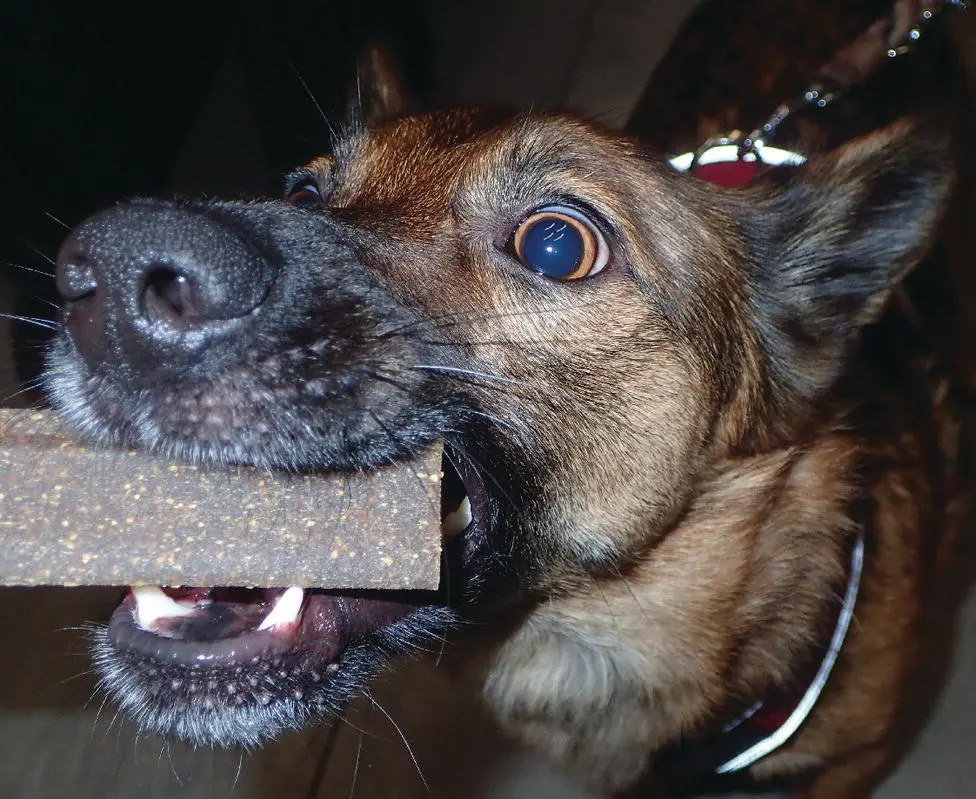
Figure 5.12 Dental treats/chews must be attractive for pets.
One important point to remember is that many chew treats that claim to help control dental disease are very hard in texture. The chewing of these products may (and often does) result in tooth fracture. A good rule of thumb is that if you cannot make an indentation into the product with your fingernail, it is too hard (Niemiec 2013). Also, just because a product is effective for dental disease does not necessarily mean it is safe. For this reason, VOHC describes the risk of tooth fracture caused by chew treats, and recommends that companies provide mechanical testing results ( Figure 5.13).
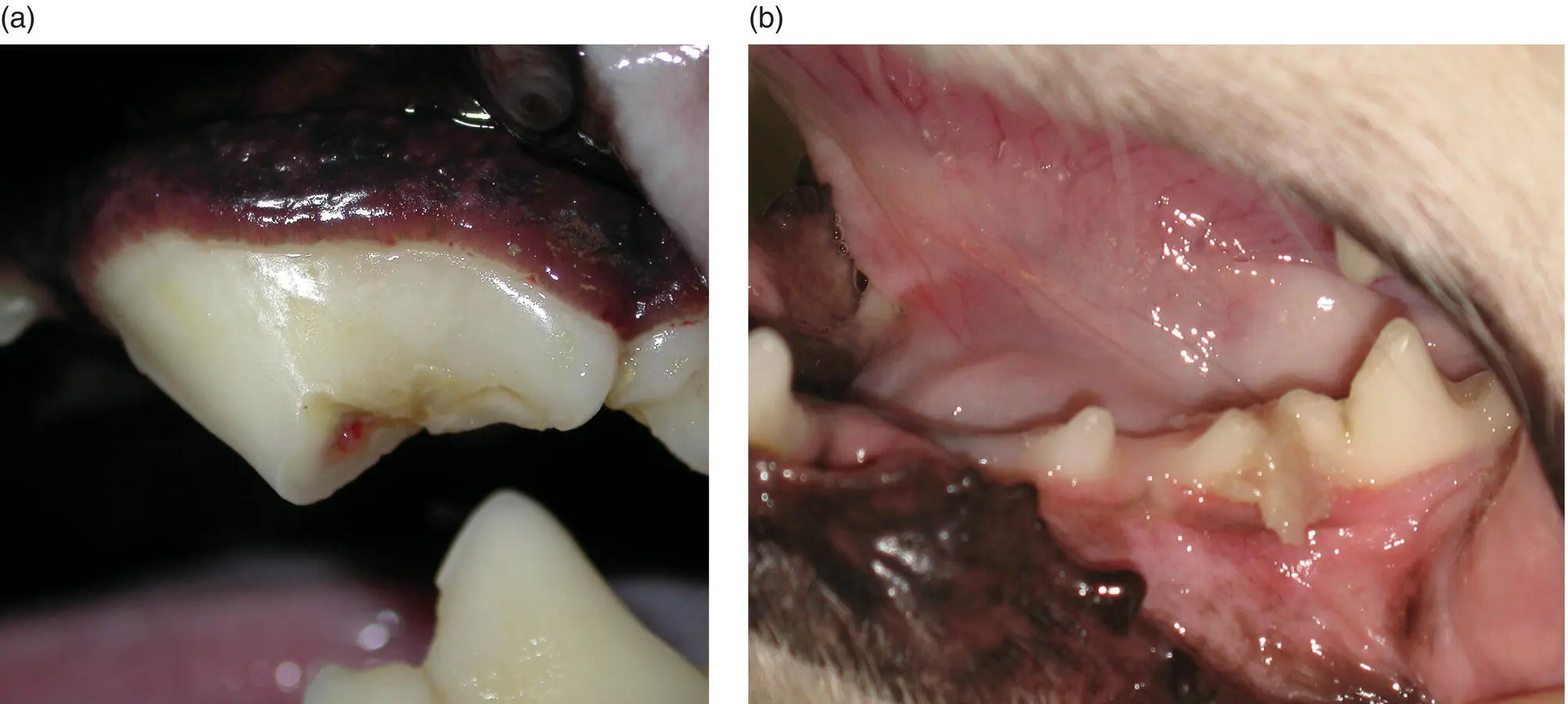
Figure 5.13 With bones or very hard chews, there is danger of (a) breaking the teeth or (b) trapping pieces of bone between them.
Читать дальше
